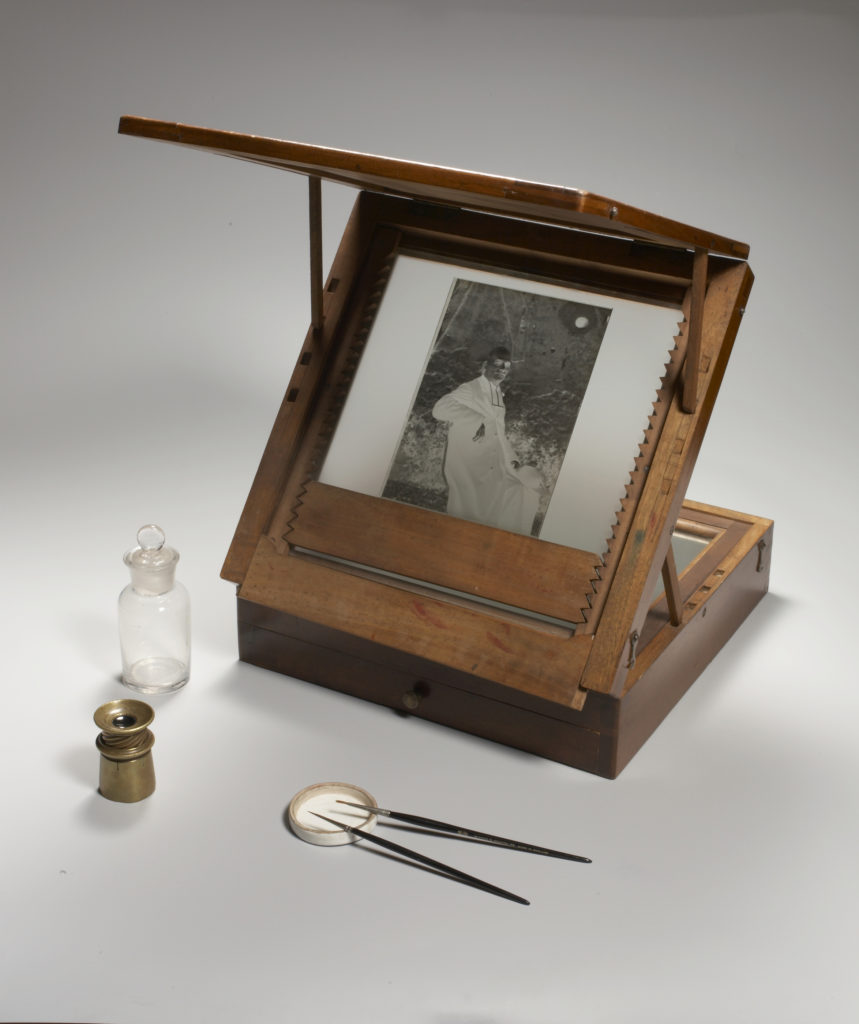Retouching Negatives
A negative was rarely perfect: apart from dust and other “mechanical” defects, which would need retouching, even the subject in the picture may have had some details for correction, like smoothening the skin texture of the face in a portrait.
The retoucher worked at a desk specially equipped with a mirror directing the light from under the negative, which was positioned on a frosted glass, with the sensitised surface upwards. A magnifying glass, retouching knives, brushes and poster colours, rubbers and pencils, varnish and therebentine constituted his main tools.
The basic principle was to limit the touching up to the strict minimum necessary, starting by working with the retouching knife, then continuing with the pencil or the brush, delicately applying colour by gently hatching.


